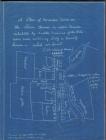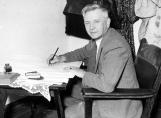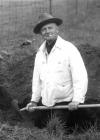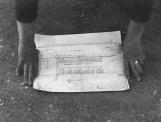1
Wilfrid Jury at Fairfield3
From Wilfrid Jury's 1972 autobiography....."Then came the invitation for me to undertake locating and excavating the old Moravian town of Fairfield on the Thames, made famous in 1812 War with the retreat of Proctor and the death of Tecumseh. Preparation, planning and arranging the financing was undertaken by the University. Dr. Fred Landon, Mr. Arthur Ford and Dr. James Talman were the chief negotiators. The Moravian Mission was taken over by the United Church. Mr. Mac Nicol. M.P. was the principal spokesman. My first contact with the venture was when Mr. Landon, Mr. Ford, Dr. Talman and Mr. MacNicol drove to the supposed site in a field beside Hutberg Moravian Cemetery.
5
Fortune was with me. After looking the land over I went across #2 Highway, dug some test holes and came up with a brass compass, nails and uncovered cornerstone, all in a few minutes. Those finds clinched the decision, gave them confidence in my surmise. Things developed after that and on an early April (1942) morning I found myself on the way to the Hotel in Thamesville where it had been arranged I would live while I did my research at Fairfield. "6
Jury examining artifacts from the Gamble Site (Fairfield) at the University of Western Ontario.1942
University of Western Ontario
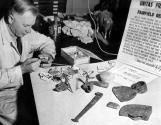
7
Wilfrid Jury completed excavations at Fairfield between 1942 and 1947. His work there was interrupted and sporadic and allowed him to mix museum and personal activities. Throughout his work, he made numerous public appearances, and made certain there was extensive newspaper and media coverage on important finds as they occurred at Old Fairfield village.8
Copy of Captain Robert McAfee's map of Fairfield before it was burned by the Americans in 1813.1813
